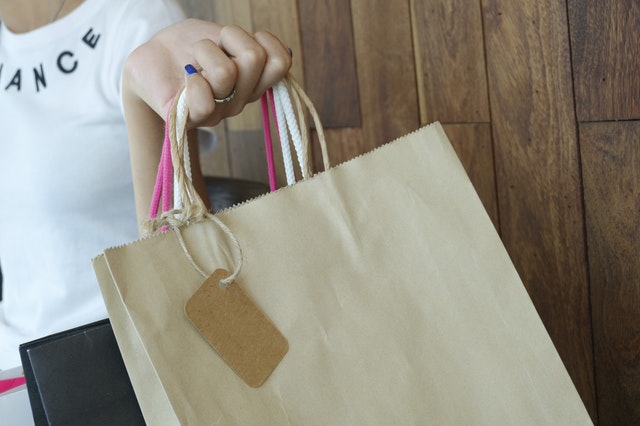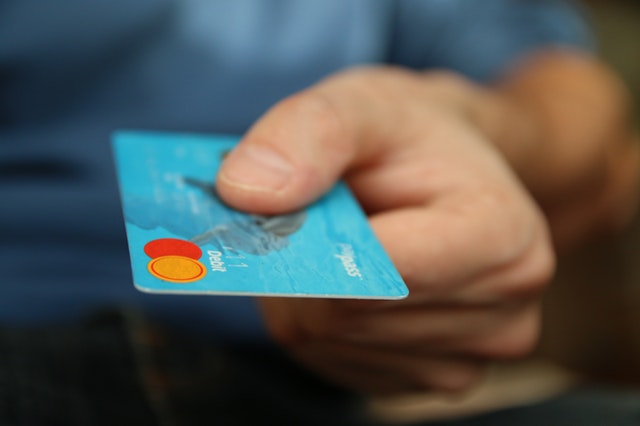With an increasing number of consumers shopping on the internet, do brick-and-mortar shops stand a chance? At least for a single pop-up store in New York City, the future of retail is all about embracing digital tendencies instead of resisting them. Mastercard and Marie Claire magazine have teamed up to make “The Next Big Thing” theory store, a pop-up shop in SoHo that provides the ease of online shopping to some physical storefront.
 Industry insiders are not ignoring physical shops just yet. Stephane Wyper, senior vice president of Internet of Things partnerships and commercialization in Mastercard said she is a big believer in the physical shop and believes when you examine only pure quantity of revenue, you still find the vast majority of the occurring in a physical surroundings. For its own part, Mastercard is taking cues in the Internet world and making transacting as easy as possible.
Industry insiders are not ignoring physical shops just yet. Stephane Wyper, senior vice president of Internet of Things partnerships and commercialization in Mastercard said she is a big believer in the physical shop and believes when you examine only pure quantity of revenue, you still find the vast majority of the occurring in a physical surroundings. For its own part, Mastercard is taking cues in the Internet world and making transacting as easy as possible.
They consider resolving for one very crucial point of friction, and that’s how to lower the total amount of time that someone must wait and really go through the checkout procedure. Window-shopping is translated literally here, using a touchscreen display built to the shop window that enables users obtain their retail treatment fix any time daily. Passerbyers can navigate, choose and pay for clothing without stepping foot inside. Payment is made through an accompanying shop program that is powered by Mastercard.
Indoors, fitting rooms also allow for cashless check out and payment through touchscreen mirrors under laminated timber frames made by Oak Labs. Technology is enabling brick-and-mortar shops to react quickly to ever-changing consumer preferences. Phillip Raub, co-founder of all b8ta, said in the Internet world you are able to track page views, click-throughs, but they could monitor thoughts, beliefs, live time and supply that real-time information analytics. The retail technician startup was a part of this concept store and also had several customer electronics on screen.
Tech startup b8ta uses cameras to quantify foot traffic and time spent looking at merchandise. Tabletop tablets exhibit product information and advertising that sellers can change on the fly. Physical retailing Is most likely the #1 largest area of chance for brand merchandise and consciousness … the future is considering how you begin monetizing the distance and the services which you supply, along with the simple fact which you’re able to buy goods.
Not to be left out is the social experience of purchasing. That is really a playground for shoppers. Nancy Berger, writer of Marie Claire, says that it truly brings together, in a social manner, intriguing shoppers so that they can experience this all together. And I believe that feeling of community is actually going to become a significant part this adventure.
The pop-up shop runs till Oct. 12 and has hosted numerous occasions such as makeovers, food samplings and discussions about health and health. By bringing electronic advantage and know-how into a physical shop, organizers are embracing a 2.0 version of brick-and-mortar retail.
Wyper explained that it is really down to a chance in a lot of ways, when you examine the Internet of Things and these connected apparatus, to actually leverage people, to actually re-evaluate what the physical shop may be.
And banking too!
Pop-up stores are common in the retail industry but less so in the banking industry. But branches built from shipping containers that measure 160 square feet could be another phase in the banking industry’s development of retail shipping. Here is how banks are experimenting with these bite-sized division designs.
Rumors surrounding the passing of bodily branches have left many financial institutions scrambling to get the ideal combination of delivery channels. Along with forecasts of smaller branch footprints in the long run, experts have highlighted the need to rethink the role branches will perform in the future.
But what if you can just drop a mobile branch away in high-traffic, populated urban crane hire areas whenever you wanted? Imagine locals buzzing about your division, and offering suggestions on where it ought to be located next? Or in case you could place your branch where it was needed the most after a natural disaster?
From the new omni-channel world, could pop-up branches such as these be the answer banks and credit unions are looking for? You need to admit, there is something appealing about being able to quickly set up shop then trucking it to a new place once it has served its purpose.
These micro-branch layouts – many created from transport containers but refurbished with glulam engineered timber products using a footprint measuring 160 square feet or less – are a cost effective means to scope out areas in which a more permanent branch place may be warranted. If one location is not getting the expected foot traffic or generating sufficient revenue, no big deal. It’s only one forklift away from being relocated.
Many of these pop-up branches are designed to function as full-service branches. Believe it or not, a 20′ x 8′ container may home 24-hour ATMs, issue debit cards immediately, open new accounts, and manage loan applications. Consumers can get information on deposit and lending products by talking to a universal banking agent who’s prepared to assist with an iPad and a grin.
And a pop-up micro-branch isn’t only more economical to build and operate, they can generally be ready to go within three months. How much cheaper? It is dependent upon its size and scope; it’s purpose and goals; the technology, equipment and accessories which are installed; and how frequently it requires to move. Logistics and transport are another consideration. Will a self-offloading trailer, forklift, slab crane or hydraulics system be required? Maybe then you should consider permitting.

